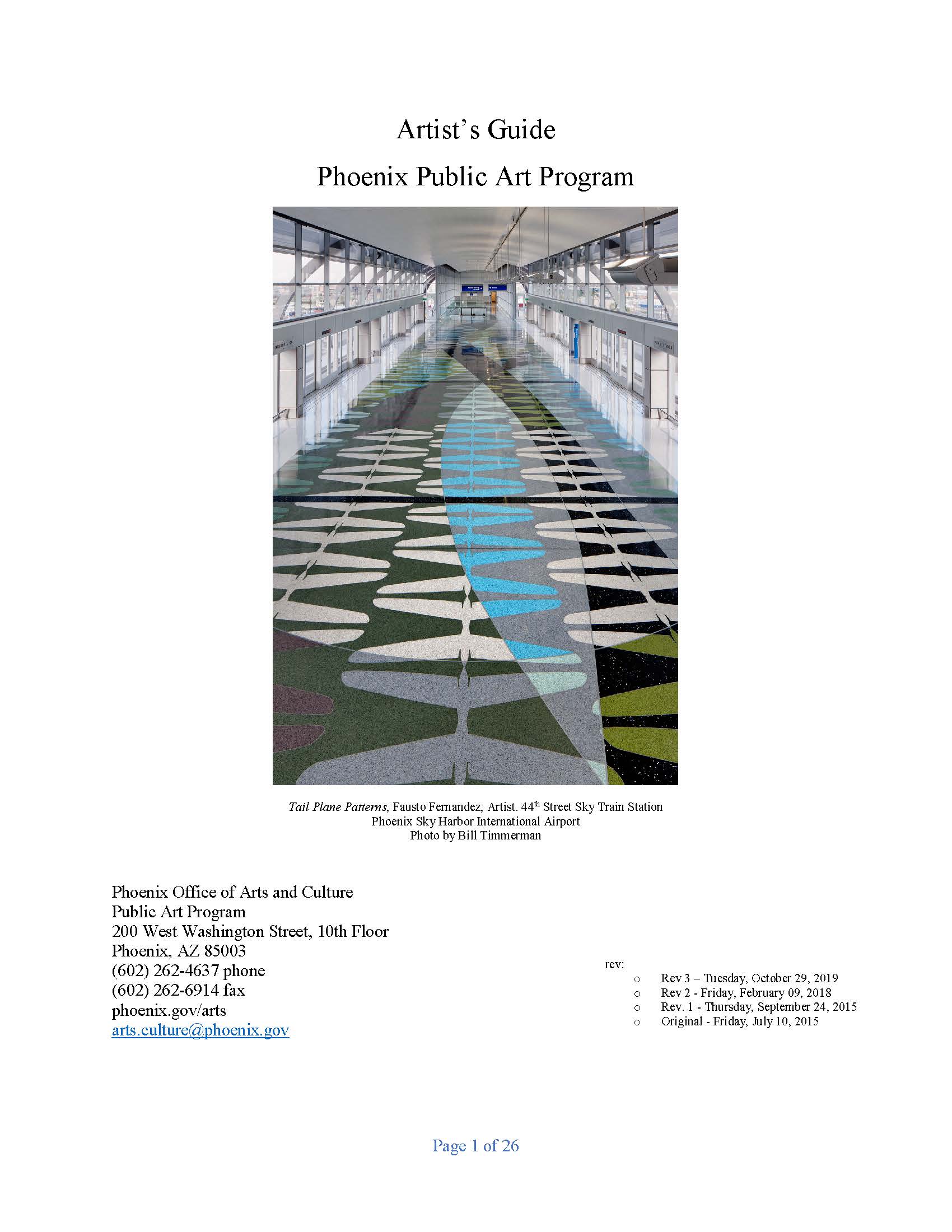 Guide to Public Art
Guide to Public Art
This guide was developed by the staff of the Phoenix
Office of Arts and Culture Public Art Program in response to the most
frequently asked questions about the program. This guide is intended as a
resource only.* The information provided here has been obtained by the staff of
the Phoenix Office of Arts and Culture, other City departments, and - most
importantly - from artists who have successfully completed public art
commissions. (2019 Updates coming soon!)
Other Resource Links:
Arizona Commission on the Arts
www.azarts.gov/
Americans for the Arts
www.artsusa.org/
Western States Arts Federation www.westaf.org/
City of Las Vegas Art Opportunities
http://artsregistrylas.vegas/
American Society of Landscape Architects
www.asla.org/
American Institute of Architects
www.aia.org/
Volunteer Legal Assistance for Artists
www.artsadvocacy.org/
Volunteer Lawyers for the Arts
www.vlany.org/
